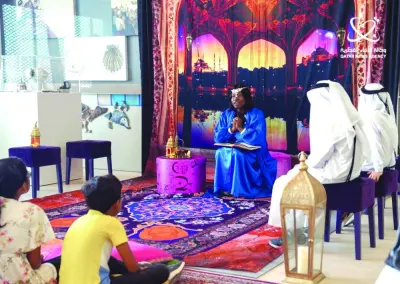The Permanent Population Committee (PPC) celebrates Qatar Population Day 2020, through social media, in the light of precautionary measures imposed to limit the spread of the new coronavirus (Covid-19).
The Permanent Population Committee has been celebrating Qatar Population Day in late October of each year, with the aim of raising awareness of population issues, in the context of comprehensive development plans and programmes, especially the Qatar National Vision 2030 and the National Development Strategy.
In its celebration this year, the committee will focus on highlighting Qatar’s population policy (2017-2022) on one hand and introducing the Committee and its achievements on the other hand, especially with regard to achieving harmonisation between population requirements and sustainable development. Since its establishment under Cabinet Resolution No 24 of 2004, the Permanent Population Committee has developed the first population policy (2009-2014) and the second (2017-2022), with the aim of improving the quality of life of Qatar’s population, both citizens and residents.
In this context, HE the President of Planning and Statistics Authority, and Chairman of the Committee, Dr Saleh Mohamed Salem al-Nabit stressed the importance of the committee’s role in following up the implementation of the state’s population policy in co-operation with all partners as well as the implementation of sectoral policies related to Qatar’s National Development Strategies (2018-2022).
Qatar Second Population Policy included a set of plans and programmes aimed at bringing about quantitative and qualitative change in the population variables, in order to ensure a decent life for the residents of Qatar, raise their capabilities, expand their options and raise their levels of participation in the advancement of the Qatari society through six axes, the first of which is the population and the workforce.
It aims to control population growth rates during the period from 2017-2022, leading to a gradual reform of demographic imbalances.
The second axis is concerned with urban growth, housing and the environment. It aims to develop and create urban centres far from Greater Doha, provide a clean urban environment and ensure the sustainability of natural resources, while the third axis focuses on education, training and youth and aims to raise the quality of education and training and expand opportunities for the participation of youth of both genders in society and in public life.
The fourth axis is related to public health and reproductive health. Its goal is to improve the general health of the population, improve the reality of reproductive health and provide its services in line with the increase in the population and its geographical distribution.
The fifth axis for women and childhood came to support the societal participation of women, and to provide the necessary conditions to increase their participation in the labour force while maintaining family cohesion and ensuring a safe environment for children.
The sixth axis is related to the elderly and persons with disabilities, in an effort to enhance their active participation in various community activities, enable them to integrate into society and to continuously improve their means of care.



